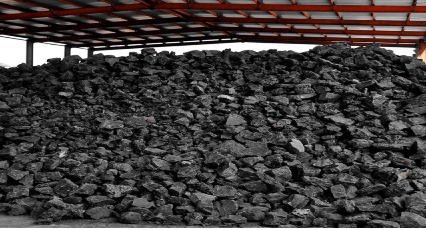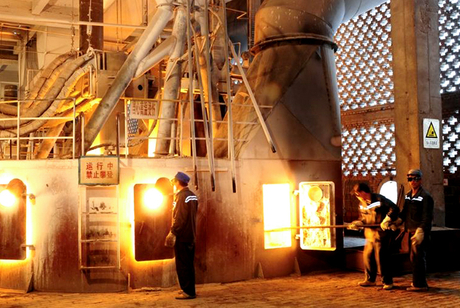Introduction to Ferrosilicon in Steelmaking
Ferrosilicon in steel production plays a pivotal role in modern metallurgy. As the global demand for higher-quality, more durable, and cost-effective steel continues to rise, manufacturers increasingly rely on ferrosilicon deoxidizer to enhance both efficiency and material properties. This iron-silicon alloy is a fundamental component in the steelmaking process due to its ability to remove impurities, improve the final product's performance, and reduce production costs.
Whether it's high-performance structural steel or stainless steel for corrosion resistance, ferrosilicon in steel production offers a host of advantages, such as:
Deoxidation: Ensures cleaner molten steel by removing excess oxygen.
Alloying: Enhances steel’s physical and chemical characteristics.
Slag Reduction: Recovers valuable elements like chromium in stainless steel.
Cost Efficiency: Offers dual benefits in one additive, lowering material and energy costs.
With these powerful benefits, ferrosilicon deoxidizer remains a cornerstone of efficient and high-quality steel manufacturing.
What Is Ferrosilicon?
Ferrosilicon is an alloy composed primarily of iron and silicon, commonly abbreviated as FeSi. It is produced through the reduction of silica (quartz) with coke in the presence of iron sources like steel scrap in electric arc furnaces. The process yields a material that is essential for steel refining and alloying.
Common Compositions of Ferrosilicon:
| Grade | Silicon Content (%) | Application Focus |
|---|---|---|
| 75% Si | High-purity | Best ferrosilicon for steelmaking, ideal for precision deoxidation |
| 72% Si | Balanced performance | Cost-effective and versatile |
| 65% Si | Budget option | Suitable for bulk applications |
Physical Properties:
Appearance: Grey to dark-grey metallic lumps or granules.
Packaging: Typically supplied in 10-50mm particle size for steelmaking.
Storage: Must be kept in dry conditions to prevent oxidation and pulverization from moisture exposure.
These compositions and characteristics define the ferrosilicon grades for steel, each tailored to specific industrial applications.
Key Roles of Ferrosilicon in Steel Production
Ferrosilicon in steel production fulfills several core functions that are essential for efficient and high-quality output.
Deoxidizer: During steelmaking, oxygen dissolved in molten steel can cause porosity and structural weaknesses. Ferrosilicon deoxidizer reacts with this oxygen to form stable silica (SiO₂), which can be easily separated.
Alloying Agent: Silicon enhances properties like tensile strength, hardness, and corrosion resistance.
Slag Reducer: Especially in stainless steelmaking, ferrosilicon reduces slags and aids in recovering expensive alloying elements like chromium.
Heat Generator: The combustion of silicon in ferrosilicon releases heat, reducing the need for external power sources and improving thermal efficiency.
These versatile roles make ferrosilicon in steel production indispensable for modern metallurgical processes.
How Ferrosilicon Enhances Steel Quality
The benefits of ferrosilicon in steel extend far beyond simple deoxidation. It directly influences the mechanical and chemical quality of steel:
Reduction of Oxides and Impurities: Ensures the final product is free from gas pockets and inclusions that weaken structural integrity.
Improved Mechanical Properties: Silicon additions result in increased tensile strength, wear resistance, and elasticity.
Uniform Composition: Promotes better mixing and consistent metallurgical characteristics throughout the steel batch.
As a result, ferrosilicon deoxidizer is a critical additive for manufacturers aiming for high-performance and reliable steel products.
Ferrosilicon as a Deoxidizer in Steelmaking
One of the most crucial applications of ferrosilicon in steel production is as a deoxidizer. Oxygen, if left in the molten metal, forms undesirable oxides that compromise steel’s performance.
Chemical Reaction:
scss复制编辑Si + O₂ → SiO₂ (solid or gas)
Advantages Over Other Deoxidizers:
| Deoxidizer | Cost | Reaction Stability | Dual Function |
|---|---|---|---|
| Ferrosilicon | Low | High | Yes (deoxidizer + alloy) |
| Aluminum | Medium | Moderate | No |
| Calcium | High | Unstable | No |
| Manganese | Medium | Moderate | Limited |
The stable and cost-effective reaction of ferrosilicon deoxidizer makes it the best ferrosilicon for steelmaking when prioritizing both quality and economy.
Ferrosilicon as an Alloying Agent
Beyond deoxidation, ferrosilicon in steel production functions as a vital alloying agent. Silicon influences a variety of performance metrics in different types of steel.
Applications by Steel Type:
| Steel Type | Silicon Content (%) | Benefits |
|---|---|---|
| Structural Steel | 0.4%–1.75% | Enhances strength and elasticity |
| Tool Steel | 0.3%–1.8% | Increases hardness and thermal resistance |
| Transformer Steel | 2.81%–4.8% | Improves electrical resistivity and magnetic permeability |
By tailoring ferrosilicon grades for steel, manufacturers can customize alloying processes to suit the end-use performance requirements.
Ferrosilicon for Slag Reduction and Heat Generation
In high-chromium steel production, such as stainless steel, ferrosilicon is used for slag reduction—recovering valuable chromium from the slag phase.
Additionally, the exothermic combustion of silicon provides a secondary benefit:
Heat Source: Significantly reduces electricity consumption during smelting.
Cost Savings: Acts as both a chemical additive and an energy input, reducing overall production expenses.
These factors make ferrosilicon in steel production an economically and energetically strategic choice.
Common Grades of Ferrosilicon Used in Steelmaking
Choosing the right ferrosilicon grades for steel is critical for optimal results. Here's a quick comparison:
| Grade | Silicon (%) | Application | Cost Efficiency | Purity |
|---|---|---|---|---|
| 75% Si | High | Precision deoxidation, electrical steel | Medium | Very High |
| 72% Si | Moderate | General alloying and deoxidation | High | High |
| 65% Si | Low | Mass steel production | Very High | Moderate |
The best ferrosilicon for steelmaking depends on your priority—be it purity, budget, or performance.
How Different Steel Types Use Ferrosilicon
Each steel variant demands specific uses of ferrosilicon in steel production:
Carbon Steel: Uses ferrosilicon deoxidizer for reducing oxides and enhancing strength.
Stainless Steel: Leverages ferrosilicon for slag reduction and chromium recovery.
Electrical Steel: Silicon content boosts magnetic efficiency and reduces energy loss.
This versatility across categories shows the deep integration of ferrosilicon grades for steel in the industry.
Ferrosilicon vs. Other Deoxidizers: Why Choose It?
When selecting a deoxidizer, why opt for ferrosilicon over alternatives?
Comparative Benefits:
Lower Cost than calcium and aluminum.
Stable Reaction reduces risk of explosions or erratic behavior.
Dual Role as both deoxidizer and alloying agent.
Easier Handling and safer storage compared to volatile options.
For a cost-performance balance, ferrosilicon deoxidizer clearly stands out as the best ferrosilicon for steelmaking.
Best Practices for Using Ferrosilicon in Steelmaking
Optimizing the use of ferrosilicon in steel production involves specific operational practices:
Particle Size: Use 10–50mm sizes for quicker melting and uniform dispersion.
Storage: Keep dry and sealed to prevent oxidation or powdering.
Dosage Control: Tailor based on steel type, furnace size, and desired silicon content.
These best practices ensure full utilization of the benefits of ferrosilicon in steel.
Environmental and Cost Benefits of Ferrosilicon
Today’s industries focus not only on performance but also on sustainability and economy. Ferrosilicon in steel production contributes significantly to both:
Reduces Waste: Less slag formation and more efficient recovery of valuable metals.
Lowers Energy Consumption: Its exothermic reaction supplements furnace heat.
Eco-Friendly: Fewer by-products and emissions than some chemical deoxidizers.
As environmental regulations tighten, the benefits of ferrosilicon in steel offer manufacturers a compliant and cost-efficient path forward.
Future Trends in Ferrosilicon Usage for Steel Production
The demand for ferrosilicon in steel production is projected to grow as steel applications become more advanced.
Key Trends:
High-Performance Steel: Automotive, aerospace, and infrastructure sectors need steel with superior strength and magnetic properties.
Eco-Friendly Manufacturing: Emphasis on low-emission production promotes the use of efficient additives like ferrosilicon.
Material Innovations: Development of ultra-pure ferrosilicon grades for steel tailored for high-tech applications.
These innovations promise to solidify ferrosilicon's role in the future of metallurgy.
FAQs About Ferrosilicon in Steelmaking
Q: What is the best ferrosilicon grade for deoxidation?
A: The 75% Si grade is the best ferrosilicon for steelmaking when purity and deoxidation efficiency are top priorities.
Q: Can ferrosilicon replace aluminum in steelmaking?
A: Partially. It depends on the steel grade, but ferrosilicon deoxidizer is often more stable and cost-effective.
Q: How does ferrosilicon improve steel strength?
A: Silicon enhances hardness, elasticity, and tensile strength, especially when alloyed into structural or tool steels.
Q: Is ferrosilicon environmentally friendly?
A: Yes, it reduces slag, emissions, and energy use, making it a sustainable option in steel production.
Conclusion
In summary, ferrosilicon in steel production is a multi-functional additive that boosts both the quality and efficiency of steelmaking processes. From ferrosilicon deoxidizer capabilities to its role in slag reduction and alloying, the benefits of ferrosilicon in steel are both technical and economic.
Given its versatility, cost-effectiveness, and alignment with future sustainability goals, ferrosilicon remains a preferred material for metallurgists worldwide. As technology evolves and the need for high-performance steel grows, the strategic use of ferrosilicon grades for steel will only become more critical.
Whether you're producing rebar, stainless steel, or transformer cores, the best ferrosilicon for steelmaking will continue to be the backbone of superior steel production.

 English
English















